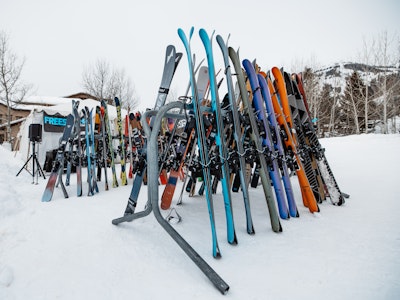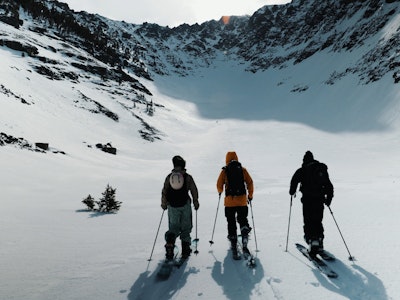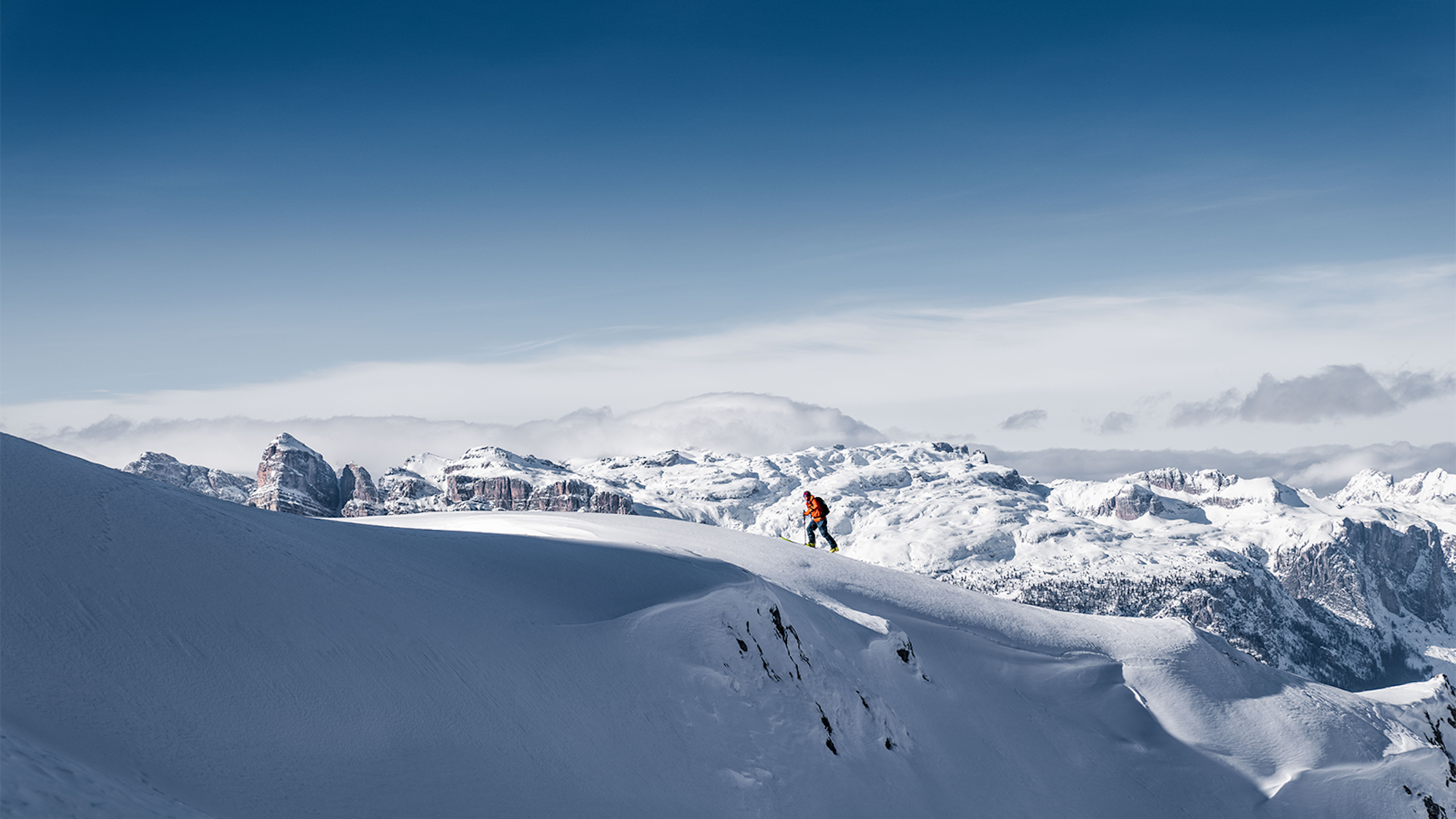Featured Image: Matteo Agreiter
Most European ski fantasies are associated with France, Austria and Switzerland. But don’t let Italy’s la dolce vita image fool you. Here in the Dolomites, tucked up in the northeast corner of the country, jagged peaks are lined with cable cars that enable snow-sliding adventures of all kinds. Whether you’re in the mood to sip on spritzes and lounge on vast sun decks or get high up into the alpine and test your mettle amongst jagged peaks, the Italian Alps are ready to provide.
Dolomiti Superski, a network of 12 inter-connected ski resorts with close to 800 miles of pistes (read: trails), is one of the largest ski areas in the world. It also happens to be dotted with a vast network of rifugios: traditional, family-run mountain huts that offer cozy rooms and home cooked meals for summer and winter travelers. They feel like five-star chalets when compared to the barebones huts typically found in the U.S and they enable a unique adventure for skiers. Known as a Ski Safari, it’s a little like a hut trip on steroids. The trip involves a ski traverse from village to village using a mix of on and off-piste runs, ski lifts and short vehicle transfers to get from one rifguio to the next. Many outfitters even transfer your bags, enabling you to ski with just as mall day pack.
Last winter, I hooked up with local outfitter Dolomite Mountains to experience a five-day alpine safari that focused on three regions: Cortina d’Ampezzo, Alta Badia and Arabba. Michele Barbiero, a UIAGM/IFMGA professional mountain guide, greeted me on my first morning in Cortina d’Ampezzo, a quintessential ski village that sits about three hours north of Venice and is gearing up to host its second Winter Olympic Games in 2026. In true Italian style, we jolted our day with some espresso as he waxed poetic about the UNESCO World Heritage scenery we’d take in the next few days. A devoted alpinist, he’s guided new routes in the Himalayas and Turkey and made the first Italian crossing of Alaska’s Denali from north to south. I knew I was in good hands.
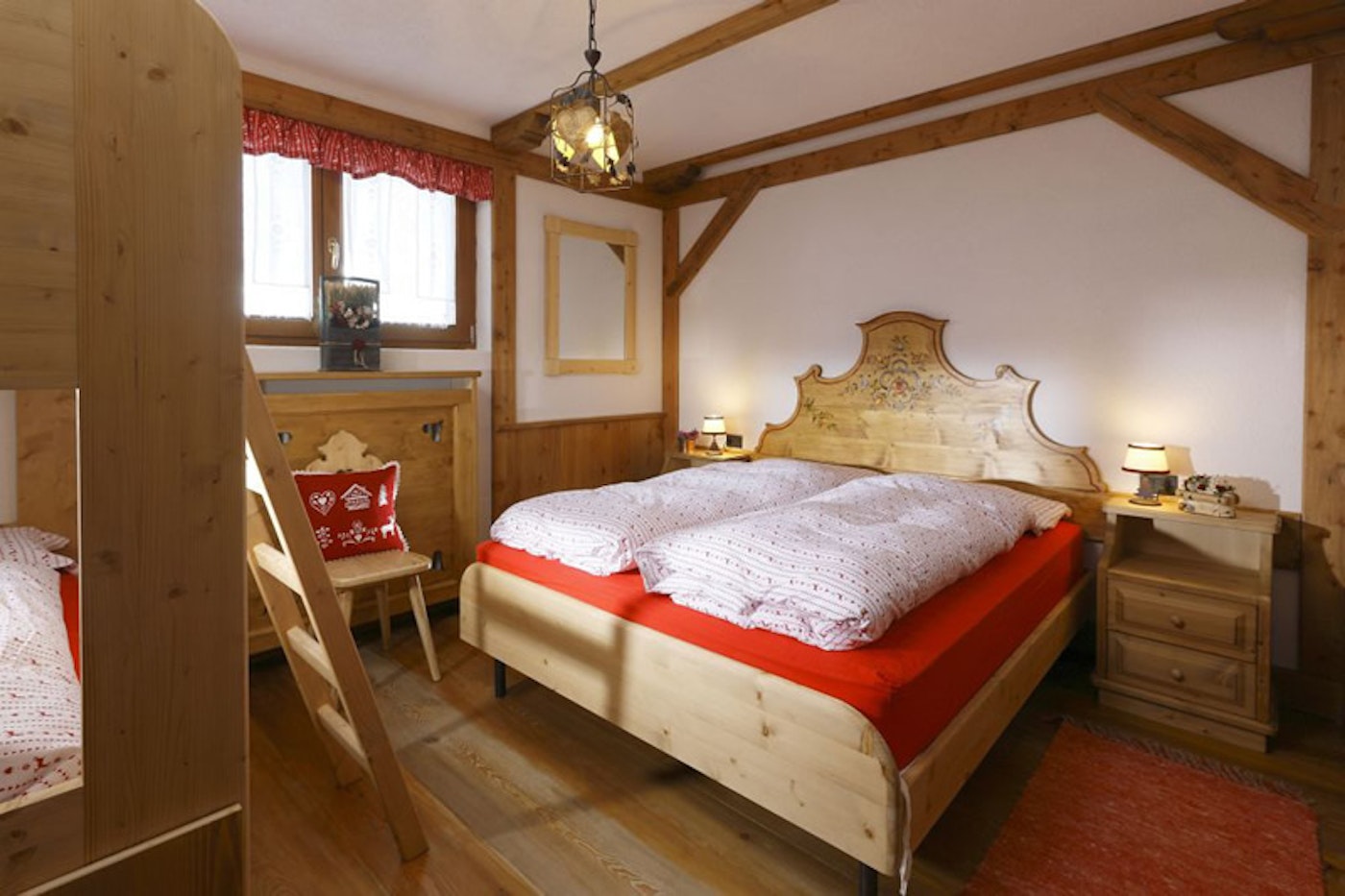
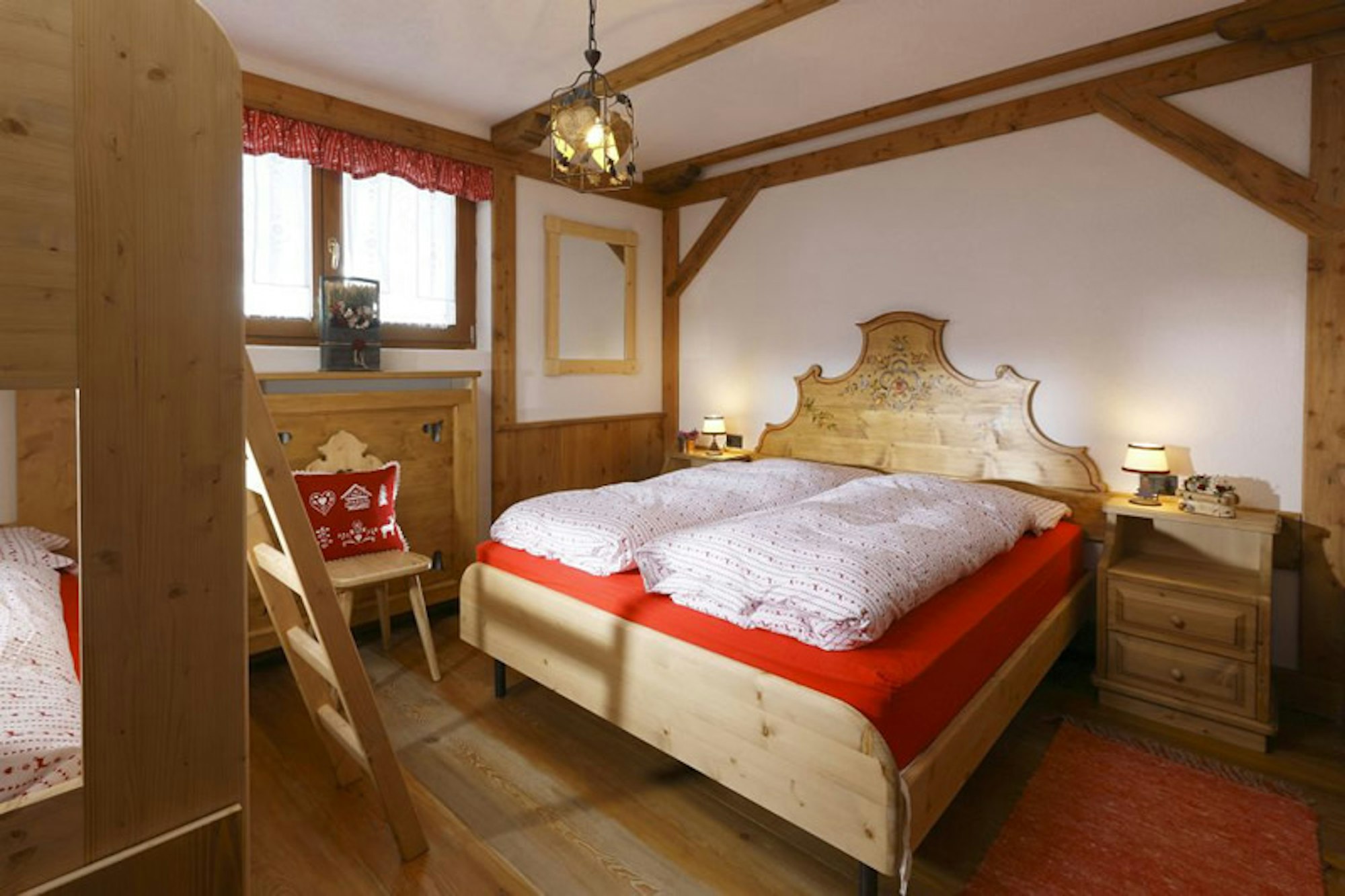
Who says you have to rough it on a ski trip? | Photo: Giuseppe Ghedina
CORTINA D’AMPEZZO
We kicked off our adventure in the Tofana ski area, which just happened to be holding the FIS Women’s Ski World Cup during my visit and Barbiero and I watched a few athletes whiz full throttle down the Olympia Delle Tofane. The iconic piste, nicknamed the Queen of Runs, is akin to a Formula One course, with the famed Schuss section boasting a slope gradient of nearly 65 percent. Watching the speed at which the women attacked the course was the perfect way to stoke my excitement for our day
The Dolomites offer every kind of skiing you could possibly imagine, from long, undulating groomers to seriously challenging off-piste descents that require boot packing and ice axes. Barbiero chose a popular off-piste route called Bus de Tofana which unfolds some 4,000 vertical feet along a beautiful couloir on the southwest side of the massive Middle Tofana. It was a dreamy way to get my Italian ski legs under me. From there, a cable car then whisked us back to the top for a few more warmup runs before we boot packed 30 minutes to a panoramic pass then dropped into a wide couloir hugged in by golden rock walls. A groomed road at the bottom connected us back to the slopes and we schussed straight to Baita Piè Tofana, a Michelin-starred, on-piste restaurant with a wood-burning fire and a menu of refined dishes that included saffron risotto with cured prosciutto and ravioli with parmesan foam.
We made a few more turns before hopping in a car for a 20-minute transfer to the Cinque Torri ski area. Here, we ascended two lifts to arrive at our home for the evening: Rifugio Averau. Set at an elevation of 7,916 feet, this modern, family-run hut feels like it’s floating in the clouds, which had just started to blush with the evening’s alpenglow. I swapped my boots for slippers and revived myself with the region’s signature winter drink, a Bombardino. The electric yellow concoction of egg liqueur and brandy-spiked eggnog rosied my cheeks as I sat on the deck overlooking the peaks to the south. “Drink more than one and you might grow hair on your chest,” Barbiero warned.
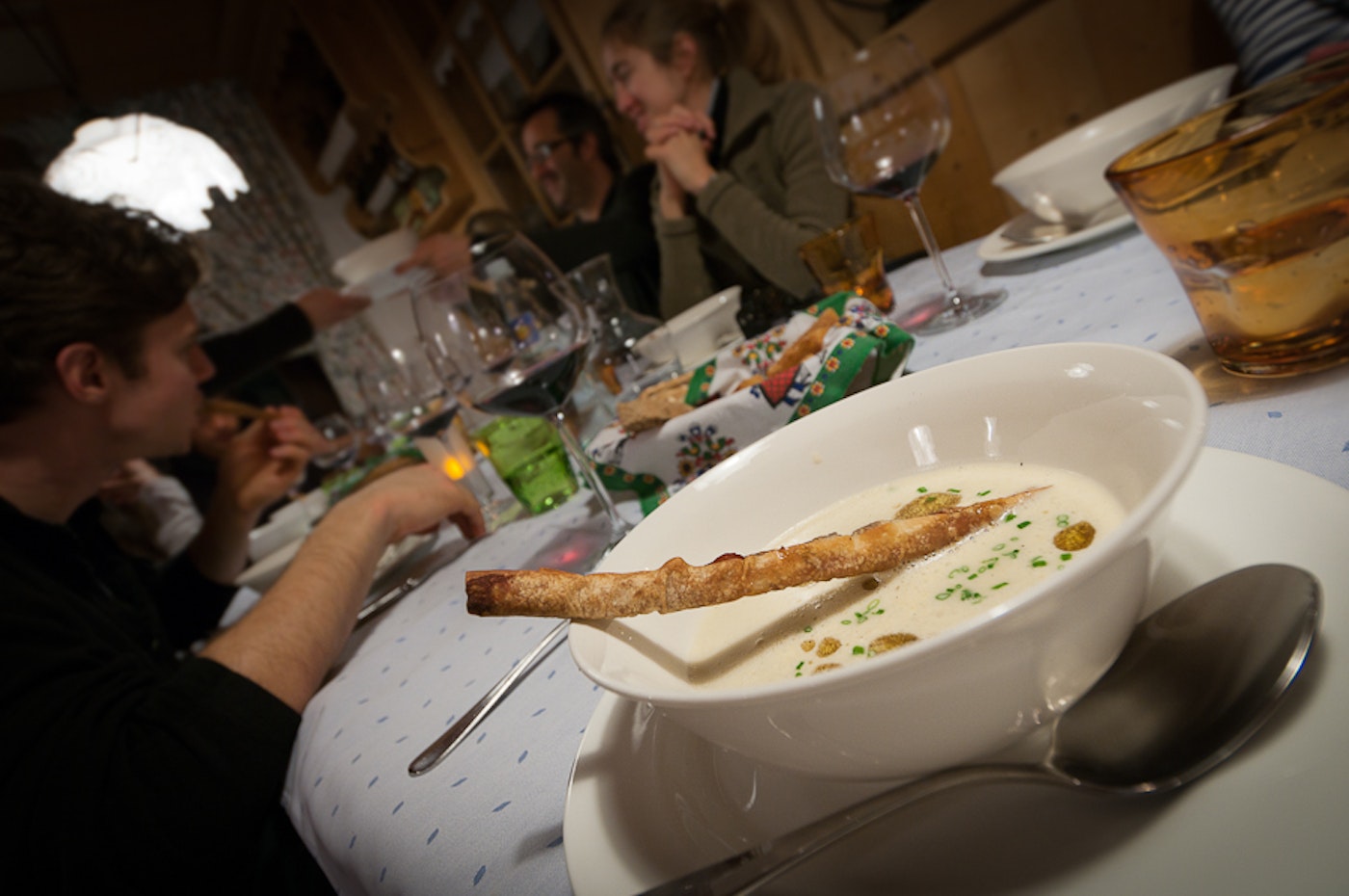
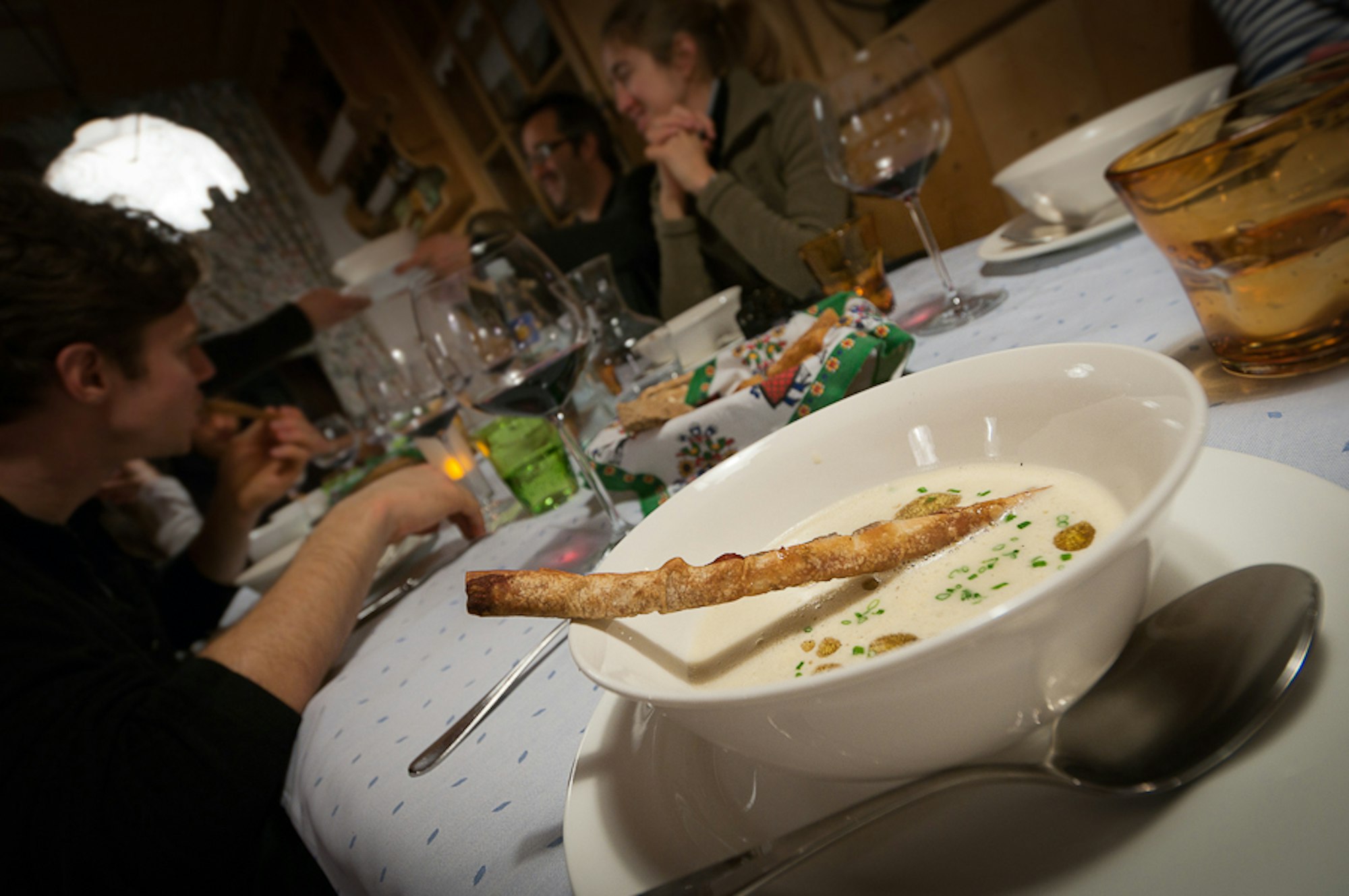
A quick snack in the Dolomites looks a little different, and we’re here for it | Photo: Giuseppe Ghedina
THE SELLA MASSIF
We rose early the next morning, booted up and set off for the Arabba ski area, a journey which would take the better part of the day. It began with a ski down to Falzarego Pass where a cable car would take us just above 2700 meters and just below the summit of Mt. Lagazuoi—a peak that that features extensive tunnels which were used during the First World War. Thankfully, the only thing we were fighting was hunger so we popped into Rifugio Scotoni for double espressos and biscotti before continuing down the groomed slopes to a something I was certainly not expecting: a horse-drawn sled. I looked at Barbiero quizzically. “Italy’s version of a T-bar,” he joked.
I white-knuckled the long, thick rope and tried not to catch an edge while being towed, along with about 40 other skiers. A few more lift-connected runs finally deposited us in the village of Arabba, which is set at the base of the Sella Massif, a plateau-shaped landmark in the heart of the Dolomites.
For the next two nights we’d base ourselves at Hotel Col di Lana. Built in 1907 by famous climber Tita Piaz (aka the Dolomite Devil) this historic rifugio is set atop Pordoi pass which is considered the region’s gateway of extreme skiing. Here, at 7,350 feet, rooms were simple, but the panorama of jagged, fang-like limestone peaks were out of this world and our hosts, Nadia and Daniela regaled us with climbing and skiing stories while stuffing us with homemade apple strudel.
Most people ogle the majestic Sella Massif via the Sella Ronda, the region’s famous, 25-mile, lift connected circuit, which can be completed in a day if you’re careful not to drink too much wine at lunch. Get in the thick of it, like we were, and you’ll find fantastic steeps and incredible lines like the Holtzer Couloir, which we skied the next morning. With a sustained, 45-50 degree pitch, this narrow channel through a massive rock wall sometimes includes a rappel over an ice waterfall, but we were lucky enough to ski it from top to bottom and it was certainly a highlight of the safari.
The following day was devoted to the Val di Mezdì, a classic off-piste run that stretches to the north of Pordoi Pass and gets likened to the Vallée Blanche in the Alps, even though it’s not a glacier run. The 7.5-mile route boasts a vertical descent of more than 4,500 feet that unfurls along a stunning valley sandwiched by more colossal rock walls—a theme here in the Dolomites. We raced down, carving fresh tracks in the snow, and only slowed when we reached the final narrow, steep pitch that spit us onto the slopes of Corvara ski area.
The wonderful thing about a ski safari is that you are always famished but your guide always has a plan. Barbiero had called ahead and reserved us a table at Mathiaskeller, a homey restaurant run by a family of former ski racers. The menu showcased specialties of the region’s unique Ladin culture, as well as authentic South Tyrolean fare, such as canederli, a delicious bread dumpling studded withspeck and cheese. From our table on the sprawling deck we admired the view of our descent as we feasted on carbs and washed down with house made grappa.
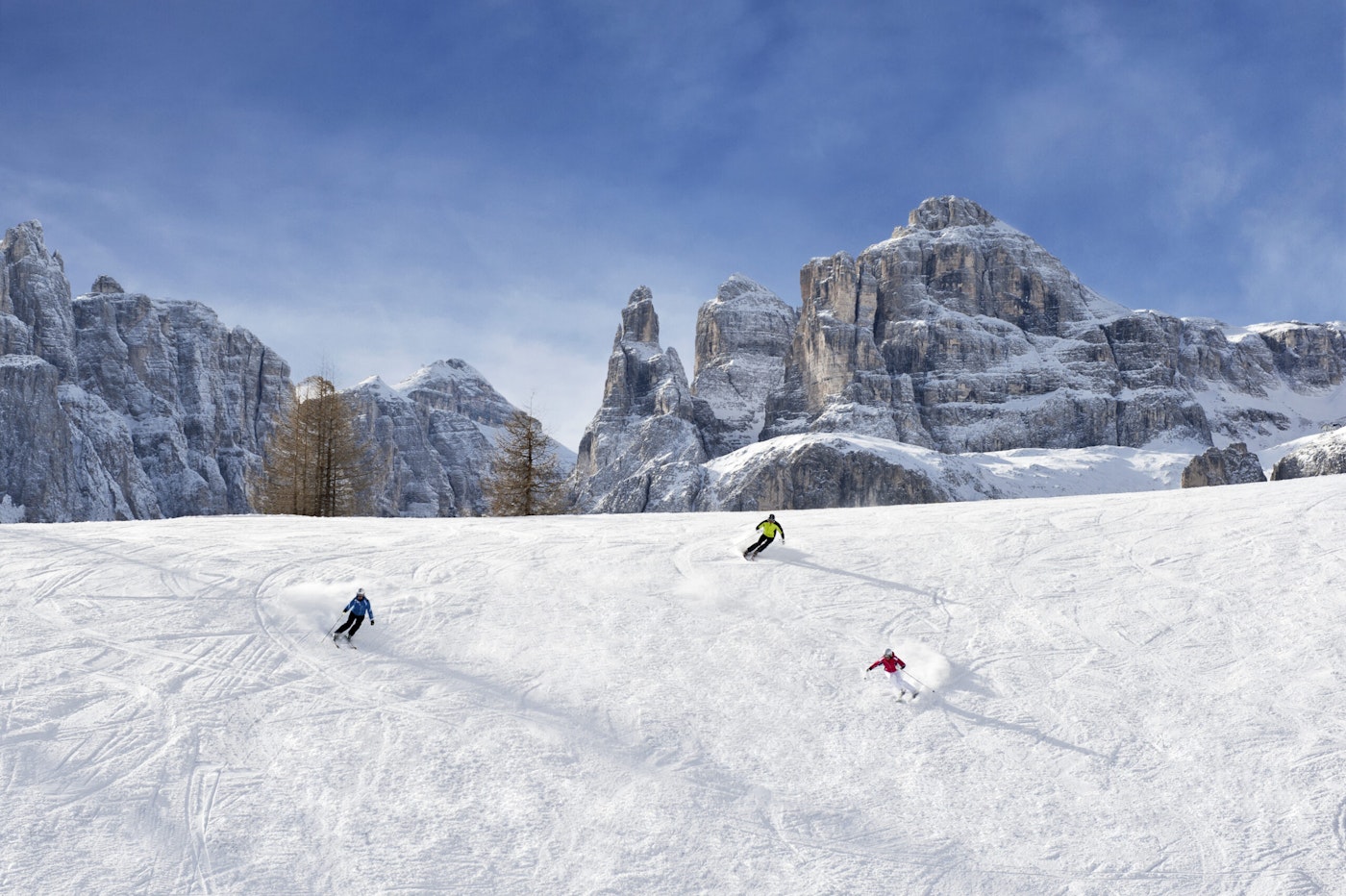
Photo: Alex Filz, Courtesy of Dolomite Mountains
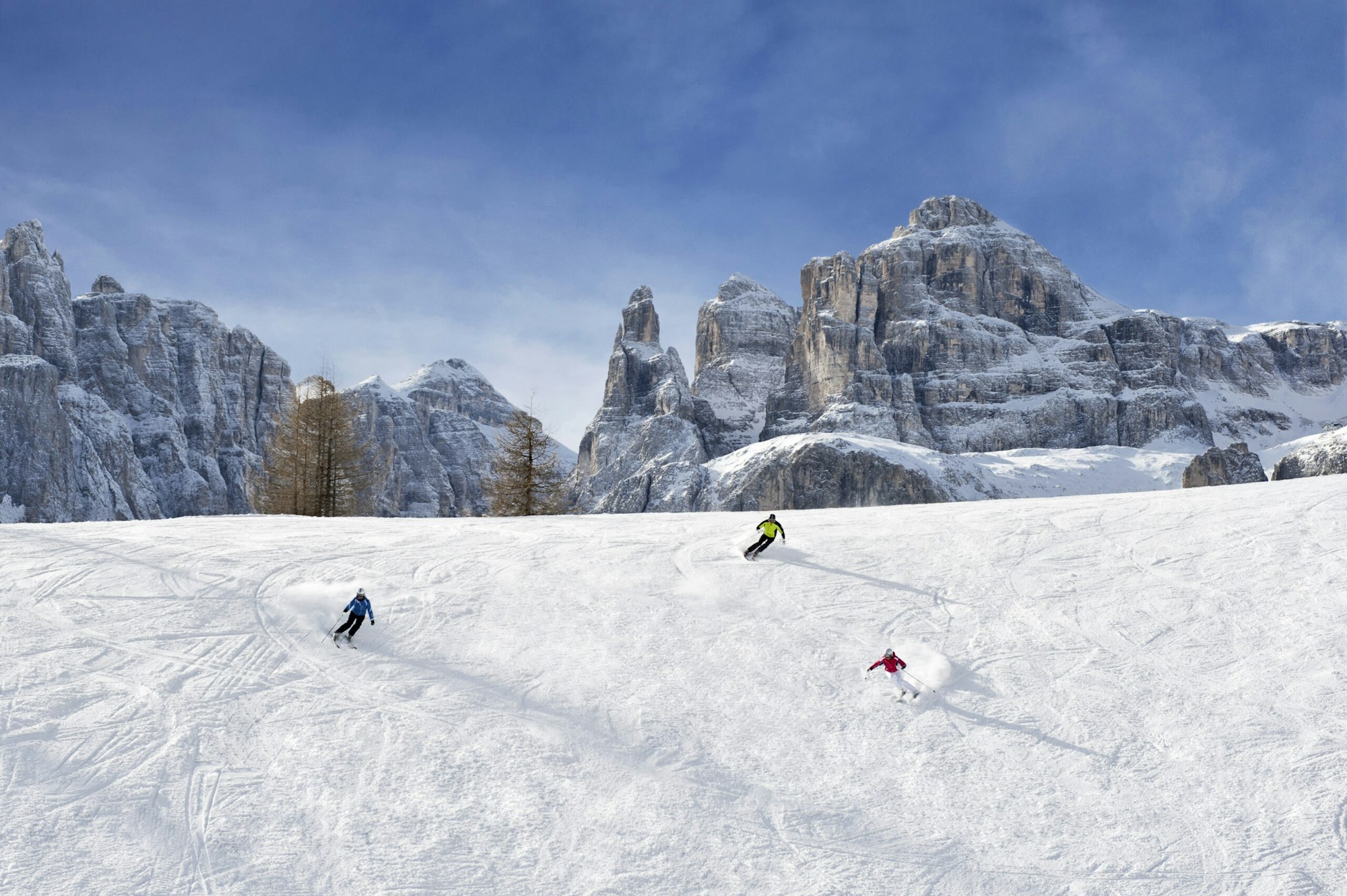
Photo: Alex Filz, Courtesy of Dolomite Mountains
THE MARMOLADA GLACIER
On day four, we left Pordoi Pass and set out to explore the Dolomites’ last remaining glacier, Marmolada. The “Queen of the Dolomites,” soars to a height of 10,965 feet — the highest in the region — and is also known as the Powder Queen. A series of three cable cars transfers skiers to the summit. We quickly popped out at the second station to visit the Museum of the Great War, which honors the soldiers who fought in these mountains, then rode the final cable car to the top.
Barbiero was giddy at the bluebird day ahead of us and we lapped endless glacier runs before collapsing into the Finnish barrel sauna at Baida Dovich, a minimalist hotel set at the foot of Marmolada. Barbiero and I toasted the day with glasses of inky Brunello and heaping bowls of hearty deer ragu pasta. I think I ate just as much as I skied during the week and that was just fine by me because when you come to Italy, you’ve got to take it all in.
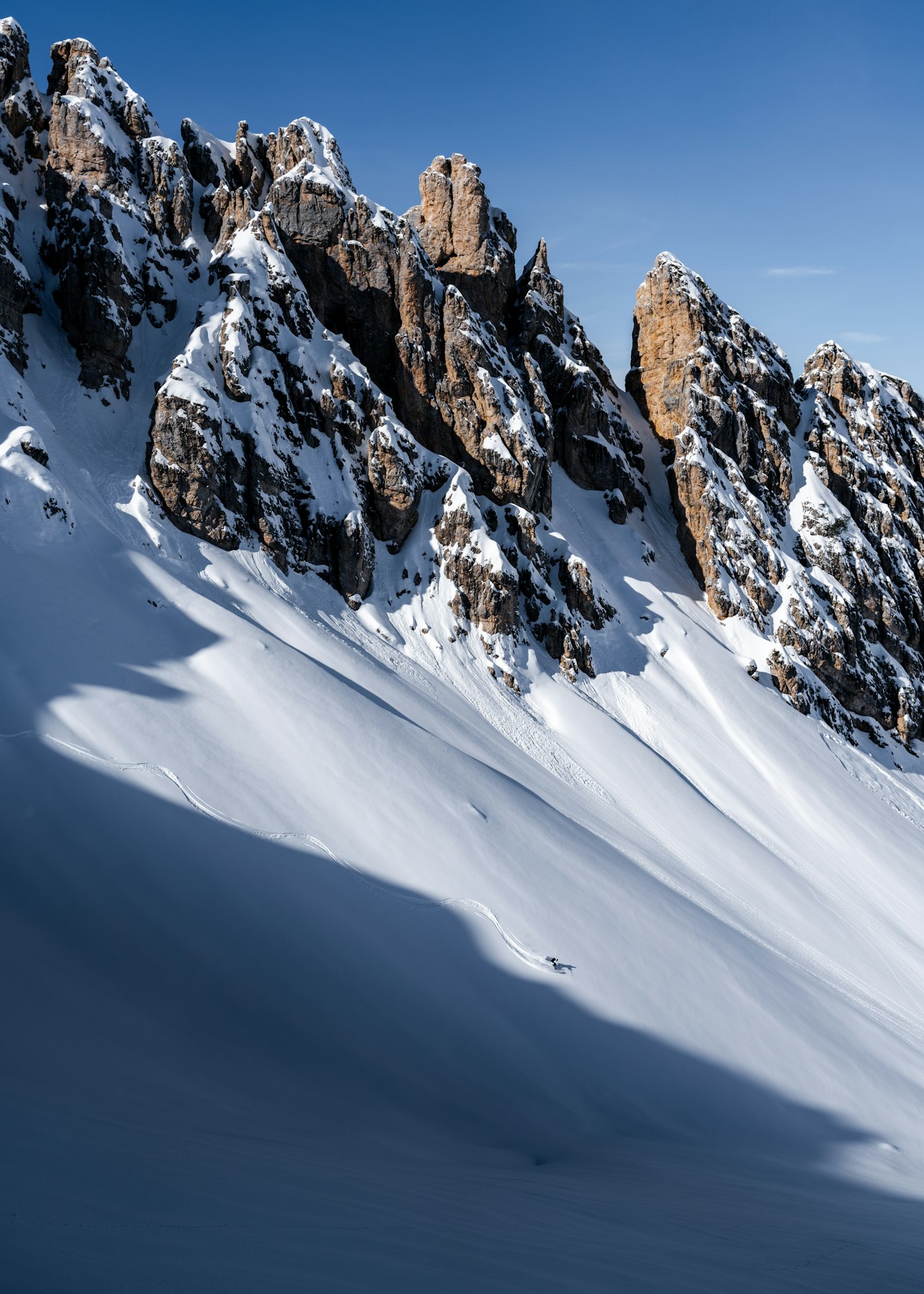
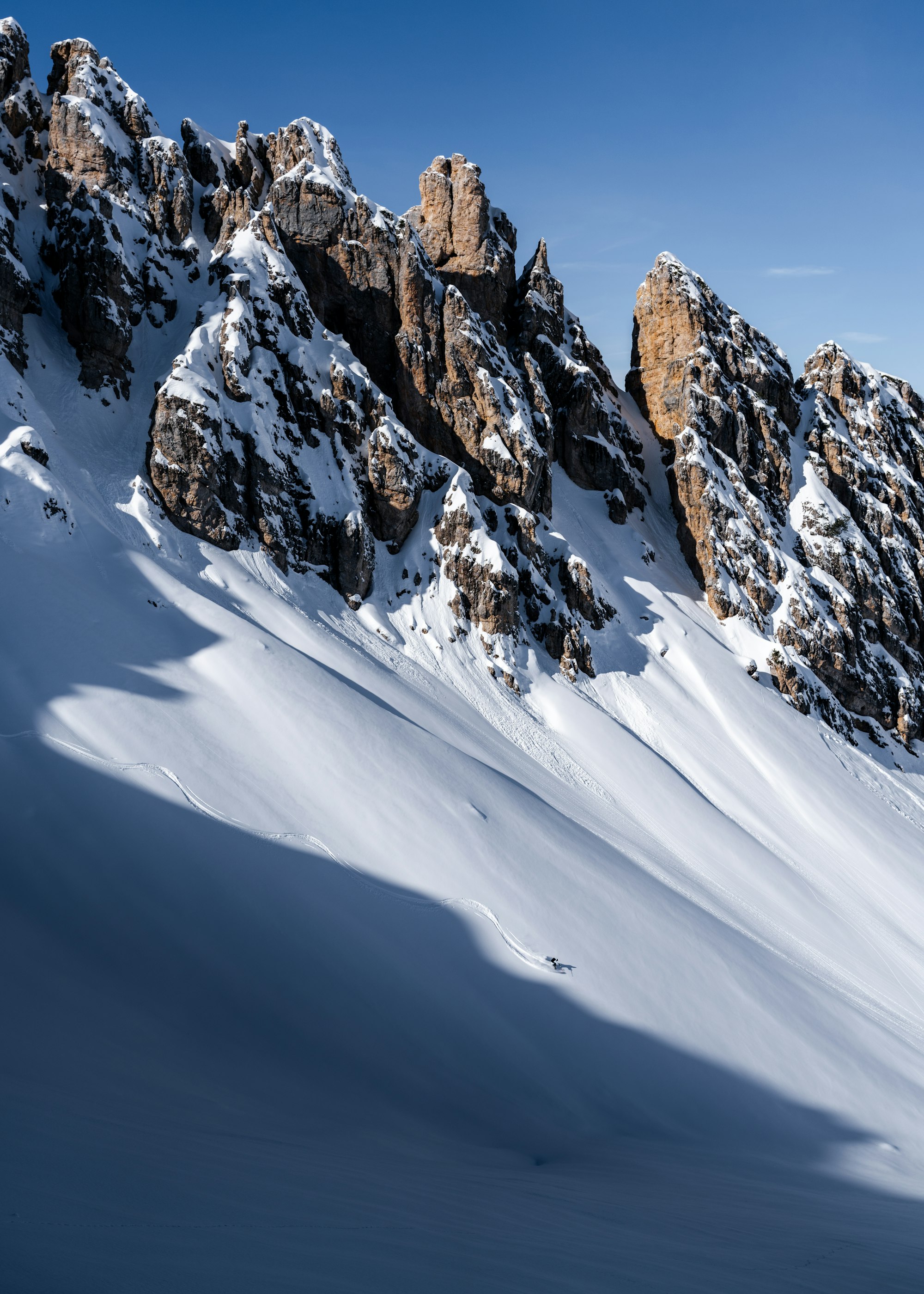
Turns like this one are far from uncommon in the Dolomites | Photo: Matteo Agreiter
Travel Tips
HOW TO GET THERE
Fly to Venice Marco Polo Airport and the Dolomite Mountains team will arrange a transfer. Seven-day, off-piste ski safaris start at $5,162 per person for a group of six, including accommodations and most meals.
For more info visit: dolomitemountains.com
WHERE TO EAT & DRINK
Miky’s Grill / ARRABA
A terrific spot for lunch known for its homemade pastas and Flintstones sized steaks grilled on a wood-fire.
Rifugio Fodom / ARRABA
A charming hut on the slopes of the Sellaronda set between the village of Arabba and the Passo Pordoi. Housemade, thin crust pizza is the specialty here and the massive deck is perfect for après ski beers on a bluebird day.
Zelda Cocktail Club / CORTINA D’AMPEZZO
Named for Zelda Fitzgerald, wife of author F. Scott Fitzgerald, this Jazz age-inspired cocktail spots set within Hotel Ambra always hosts a lively aperitivo hour.
Molo Pub / Cortina
Dating to the 1960s, this low-key pub is credited with bringing American-style craft beer to the area and has over 300 different styles on tap.
L’Got / CORVARA
Excellent, laidback après cocktails (try the Spritz) and snacks.
L’Murin / CORVARA
If you’re looking to dance on tables and do shots, this is this rowdy après spot in Hotel La Perla is the spot.

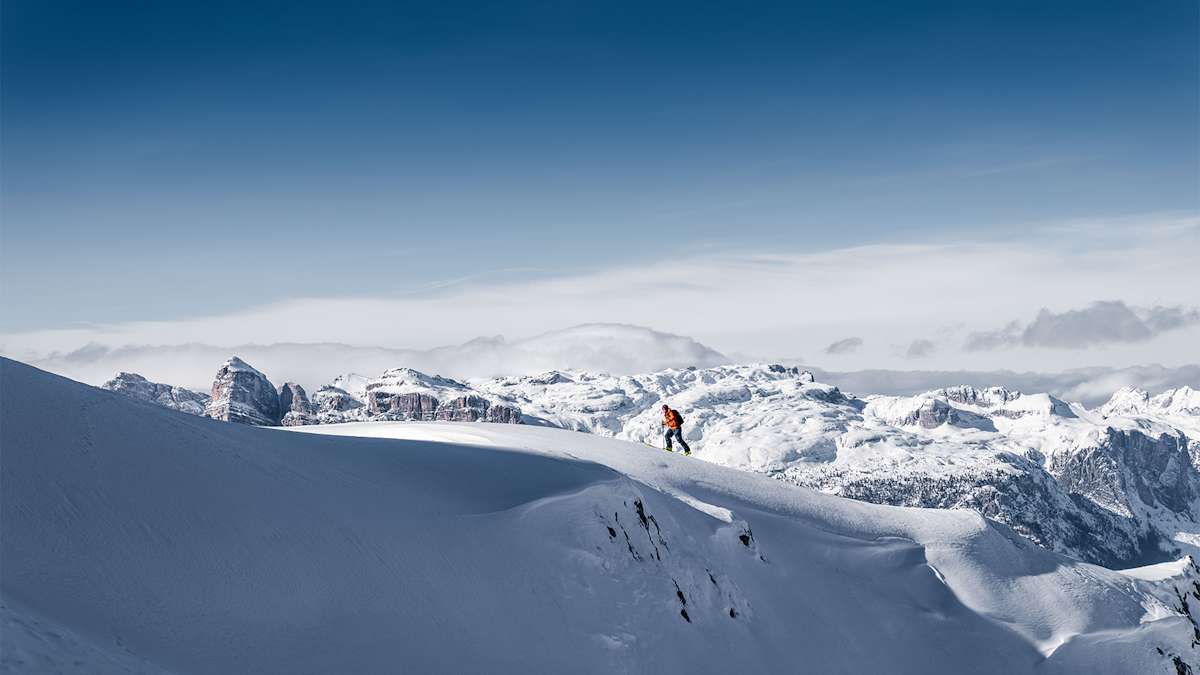
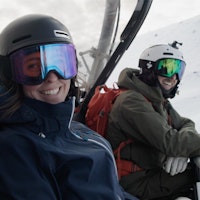
![[GIVEAWAY] Win a Head-to-Toe Ski Setup from IFSA](https://www.datocms-assets.com/163516/1765920344-ifsa.jpg?w=200&h=200&fit=crop)
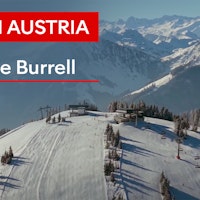
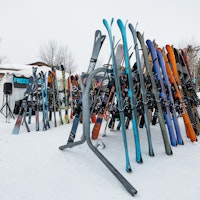
![[GIVEAWAY] Win a Legendary Ski Trip with Icelantic's Road to the Rocks](https://www.datocms-assets.com/163516/1765233064-r2r26_freeskier_leaderboard1.jpg?auto=format&w=400&h=300&fit=crop&crop=faces,entropy)
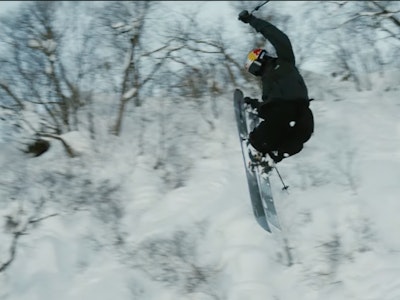

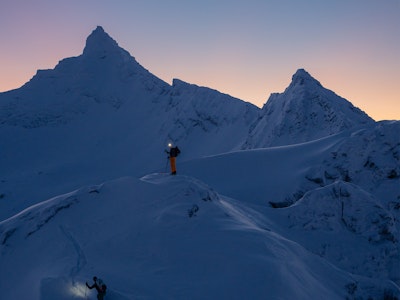
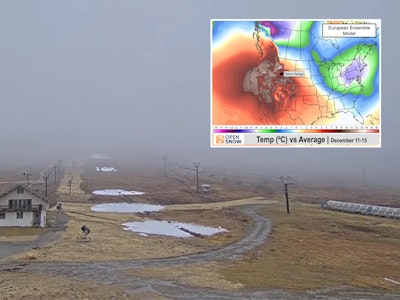
![[GIVEAWAY] Win a Head-to-Toe Ski Setup from IFSA](https://www.datocms-assets.com/163516/1765920344-ifsa.jpg?auto=format&w=400&h=300&fit=crop&crop=faces,entropy)
